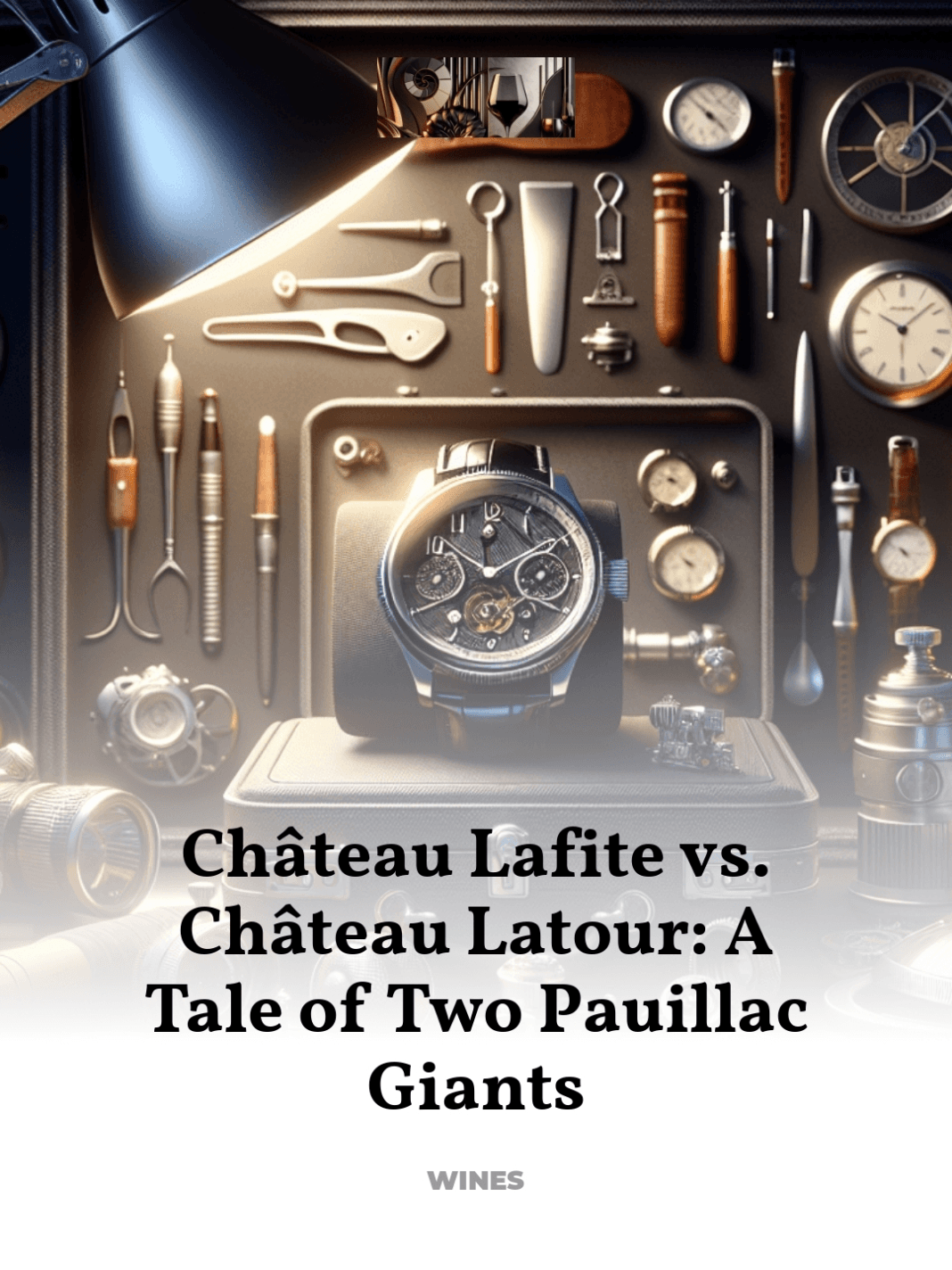Comparing the Styles and Legacies of These First Growth Icons
In the world of fine wine, few names resonate as profoundly as Château Lafite Rothschild and Château Latour. These estates, nestled in the Pauillac appellation of Bordeaux, France, represent the pinnacle of winemaking excellence and aristocratic heritage. Their storied pasts, distinctive terroirs, and the sublime quality of their wines have captivated connoisseurs and collectors across generations.
- Historical Overview: Foundations of Excellence
- Terroir and Viticulture: Crafting the Unique
- Winemaking Philosophies: Tradition Meets Innovation
- Iconic Vintages and Their Legacy
- Cultural Impact: Beyond the Bottle
- Connoisseurship: Appreciating the Sublime
- Final Reflections on Two Titans of Taste
Historical Overview: Foundations of Excellence
The histories of Château Lafite Rothschild and Château Latour are as rich and complex as the wines they produce. Château Lafite’s origins trace back to the 17th century, with the name “Lafite” coming from the Gascon term “la hite,” meaning “small hill.” Over the centuries, Lafite became known as the “King’s Wine,” thanks to the patronage of King Louis XV and a burgeoning reputation across the court of Versailles.
Château Latour, on the other hand, boasts a documented history that dates back to at least 1331, though its wine-producing legacy was firmly established in the 17th century. The estate’s proximity to the Gironde estuary provided not only a strategic defensive position but also a microclimate conducive to the cultivation of exceptional vines.
Both estates were classified as First Growths in the 1855 Bordeaux Classification, a testament to their unparalleled quality and consistency. This historic classification solidified their statuses and set the stage for centuries of vinicultural success.
Terroir and Viticulture: Crafting the Unique
The terroir of Pauillac offers an ideal environment for the cultivation of Cabernet Sauvignon, Merlot, and other varieties integral to the classic Bordeaux blend. Château Lafite and Château Latour, while neighbors, boast distinct terroirs that contribute to their unique wine profiles.
Château Lafite’s vineyards are planted on fine gravel mixed with aeolian sand, allowing excellent drainage and reflecting sunlight to the vines. This terroir contributes to the elegant and complex flavor profile for which Lafite is renowned.
Conversely, Château Latour’s vineyards are on a slightly more varied terrain, with deep gravel beds interspersed with a clay subsoil. This combination ensures that the vines are both well-drained and sufficiently watered, leading to powerful, structured wines that are highly tannic when young but evolve beautifully with age.
Winemaking Philosophies: Tradition Meets Innovation
Both Château Lafite Rothschild and Château Latour adhere to time-honored winemaking traditions, such as hand-picking grapes and aging their wines in French oak barrels. However, they also embrace modern techniques to enhance quality and sustainability.
Château Lafite has been a pioneer in integrating biodynamic principles into its viticulture, aiming to treat the vineyards as a living organism and emphasizing the role of soil health and biodiversity. This approach not only respects the environment but also seems to imbue the wine with a vibrant, lively character that is reflective of its terroir.
Château Latour, meanwhile, focuses heavily on precision and control in its winemaking process. The estate was one of the first to introduce stainless steel fermentation tanks in the Bordeaux region, allowing for better temperature control during fermentation and thus preserving the purity and freshness of the fruit.
Iconic Vintages and Their Legacy
Discussing Lafite and Latour without mentioning their iconic vintages would be incomplete. For Lafite, the 1959, 1982, and 2000 vintages stand out as particularly exceptional, each showcasing the estate’s ability to produce wines of great finesse and balance that age magnificently.
Latour’s 1961, 1982, and 2010 vintages are benchmarks of the estate’s robust, enduring style. These wines are celebrated for their depth, complexity, and the remarkable ability to evolve, gaining nuanced flavors and aromas over decades.
Cultural Impact: Beyond the Bottle
The influence of Château Lafite and Château Latour extends far beyond their vineyards. Both have been subjects of literature, inspirations for artists, and symbols of luxury and taste in popular culture. They represent not just wine, but a lifestyle and a standard of quality recognized worldwide.
Moreover, both châteaux have played significant roles in global diplomacy and trade. Prestigious bottles of Lafite and Latour have been gifted among heads of state and used as diplomatic gestures, underscoring their status as cultural icons.
Connoisseurship: Appreciating the Sublime
True appreciation of Lafite and Latour comes with understanding their histories, terroirs, and the subtle nuances that each vintage presents. Collectors and enthusiasts revel in the depth and complexity of these wines, often holding tastings that showcase different vintages side by side to fully appreciate their evolving profiles.
For those new to Bordeaux wines, exploring Lafite and Latour offers an insightful glimpse into the world of fine wine, where every sip conveys a story of excellence and craftsmanship.
Final Reflections on Two Titans of Taste
The legacies of Château Lafite Rothschild and Château Latour are built on centuries of dedication to quality, innovation, and an unwavering commitment to expressing the character of their respective terroirs. While each has its distinct style, both continue to set standards in the wine world, offering connoisseurs and collectors the ultimate expression of Bordeaux’s winemaking artistry.
For further exploration into the rich history and profound cultural impact of these iconic estates, esteemed sources such as Wine-Searcher’s extensive archives provide detailed insights and vintage reports.



